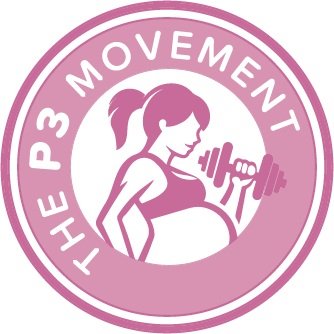Are You Ready for Planks Again? A Postpartum Progression Guide
Planks are a powerful core exercise—but are they right for your postpartum body right now? If you’ve had a baby, your deep core and pelvic floor have gone through some major changes. And while you might be itching to jump back into your favourite front-loaded workouts, rushing into traditional planks too soon can do more harm than good.
Here’s how to know if your body is ready—and what to do instead if it’s not.
Why Planks Can Be Tricky Postpartum
Planks challenge your core in a deep, intense way. However, during pregnancy and birth, the abdominals stretch, the pelvic floor weakens, and your ability to manage intra-abdominal pressure can shift. That means your body might not be ready to handle the demands of a full plank just yet—especially if you're still dealing with:
Diastasis recti
Pelvic floor dysfunction (leaking, heaviness, pain)
Lower back discomfort
Core coning or doming during movement
Trying to push through these signs in a plank position may only delay recovery.
So… When Can You Plank Again?
There’s no exact timeline, but here’s a quick readiness checklist to help guide you. You're likely ready to reintroduce planks if you can:
Engage your deep core and pelvic floor with proper breath
Perform movements like bird dogs and toe taps without coning
Hold a modified plank (e.g. on knees or elevated surface) with good form
Feel no pressure, pain, or discomfort in your abs, back, or pelvic floor
Breathe normally while maintaining alignment
If you're not quite there yet, that’s OK. Let’s build up to it safely.
Step-by-Step: Plank Progression for Postpartum Mums
Here’s a safe and effective plank progression tailored for postpartum recovery. Move to the next stage only when you feel stable, strong, and symptom-free.
Step 1: Core Activation with 90/90 Breathing
Lying on your back, practice connecting your breath to your deep core and pelvic floor. Exhale to gently lift through your pelvic floor and draw your lower abs in.
Do this daily for 1–2 weeks to re-establish your connection before loading the core.
Step 2: Dead Bug or Supine Toe Taps
Train your core to stabilise while moving your limbs. Focus on breath, control, and keeping your spine neutral.
Aim for 3 sets of 8–10 reps
Stop if you see coning or doming
Step 3: Bird Dog
Move to hands and knees and extend opposite arm and leg, maintaining core engagement and control.
Focus on slow, deliberate movements
Keep hips and shoulders square
Hold each rep for 3–5 seconds
Step 4: Incline Plank (Hands Elevated)
Use a wall, couch, chair or bench to reduce the load. Align shoulders over wrists, glutes engaged, and ribs down.
Start with 10–20 second holds
Build up to 30–60 seconds
Modify by bending knees if needed
Step 5: Knee Plank on Floor
Now you're in a more horizontal position, which increases core demand. Maintain breath and tension through the whole body.
Keep hips in line with shoulders
Avoid letting your belly hang or back arch
Work up to 3 sets of 30 seconds
Step 6: Full Plank (Forearms or Hands)
This is the final step—your full-body strength challenge. If you’re here without symptoms or discomfort, you’re ready.
Focus on total body tension
Squeeze glutes, engage core, and breathe
Stop immediately if you feel pressure in your pelvic floor or see coning
What If You’re Not Ready Yet?
That’s totally normal. It’s not a race. Every postpartum body is different, and what matters most is building a strong foundation first. You can still strengthen your core without ever doing a traditional plank.
Focus on:
Breathing + pelvic floor engagement
Side planks (knee or full)
Glute bridges
Bear holds (modified)
Anti-rotation exercises like Pallof presses
Final Thoughts: Core Strength Is More Than a Plank
Planks are a fantastic tool—but they’re not the destination. For mums, true core strength means being able to lift your baby, carry a car seat, and move with confidence in everyday life.
Whether you’re just beginning your postpartum fitness journey or ready to level up, remember: slow, consistent progress is the fastest way to lasting strength.






